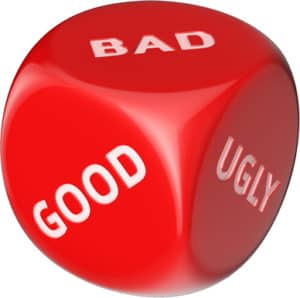702-660-7000
702-660-7000

We often receive new materials and marketing suggestions from various insurance companies introducing new products or strategies. Just recently, an email arrived from a company we don’t represent that caught our attention. It highlighted how permanent life insurance can be an effective tool to sustain your income during market downturns. The idea is that when the market declines and you’re forced to dip into the principal of your investment accounts instead of living off their growth, a permanent life insurance policy can provide a more stable income source, helping to protect your nest egg from premature depletion.
This is actually true! During a market correction, you can maintain a higher standard of living by drawing funds from—or borrowing against—your life insurance policy rather than liquidating investments and eating into your principal. That’s a solid fact. But that was where the facts in that email ended. Afterward, they started pushing a specific Indexed Universal Life (IUL) policy as the guaranteed income solution you’ll want when the market takes a downturn.
Here are some important reasons why such a plan could potentially fail and cause significant financial harm down the road:
The return assumed in an IUL policy is not the same as the actual cash value growth. Various fees associated with IULs can sometimes consume more than your annual gains, especially during weak market periods.
IULs often impose caps on returns, which can cut your potential earnings by 40% or more compared to investing directly in the index you choose.
When the market finally corrects—which typically happens every 8 to 10 years—an IUL policy misses out on the consistent growth that a dividend-paying whole life insurance policy would continue to provide.
So while IULs might seem attractive on the surface, their long-term performance and guarantees often don’t hold up the way many investors hope.
At the point when you actually need to start drawing from your life insurance policy to replace income you can’t safely take from your investments without eroding your principal, the reality with an IUL often hits hard. Due to the steadily rising costs of the underlying term insurance platform that supports an IUL, your policy’s cash value growth may stall or even disappear. In other words, your policy may no longer be building the value you were counting on right when you need it most. That’s a tough situation to face.
Fortunately, this issue can be avoided by choosing and properly funding the right type of policy from the start—participating whole life insurance (PWLI). PWLI offers guaranteed values backed by the insurance company, plus the right to share in the company’s profits each year after those guarantees are fulfilled. That combination creates a much stronger and more reliable foundation.
Here’s a practical example: Suppose you fund a life insurance policy at $3,010 annually for 40 years. At age 66, you suddenly need to withdraw $40,000 a year from your policy because a market correction has just happened, and you want to avoid dipping into the principal you’ve saved outside of the policy.
If your policy was an IUL, even assuming maximum historical growth rates allowed by the policy over those 40 years, you could be facing a guaranteed cash value of $0.00 — despite having paid $117,376 in premiums since age 26. That means no guaranteed money to draw from when you need it most, exposing a major risk in relying on IULs for long-term financial stability.
It’s possible that the non-guaranteed returns projected for the IUL policy actually materialize, meaning you might have around $126,199 in accumulated cash value available to you at age 66. However, if you withdraw $40,000 annually from that amount, your policy’s cash value would be depleted in just a little over three years. Once those funds run out, the policy would lapse, leaving you without any cash value and no life insurance coverage.
By contrast, if you had invested the same annual premium of $3,010 into a Participating Whole Life Insurance Policy (PWLIP), your guaranteed cash value at age 66 would be approximately $222,260—far more than the zero guaranteed by the IUL policy. Furthermore, with dividends paid out over the years, your accessible cash values could potentially exceed $284,970, more than double the non-guaranteed cash value estimated for the IUL.
Another advantage is that dividends from the PWLIP can be used to offset the interest on policy loans taken to cover living expenses during a market downturn. This strategy helps protect the principal you’ve built in other investments, allowing you to avoid drawing down those assets prematurely and reducing the risk of running out of money later in life.
The Participating Whole Life Insurance Policy (PWLIP) offers a significant advantage over the Indexed Universal Life (IUL) policy in that it won’t lapse once you reach age 66 because no further premiums are required after that point. This means that your guaranteed cash values will continue to grow, along with any dividends paid by the insurance company. Thanks to these dividends, your PWLIP not only allows your policy’s value to increase over time but also ensures that your life insurance coverage remains in force for the rest of your life—provided the company continues to earn a profit, which it has done consistently for over 100 years.
The reality is that when you choose an IUL policy, you are taking on a risk that the insurance company would happily shoulder for you if you simply opted for a PWLIP instead. By accepting this risk with an IUL, you face the very real possibility of running out of both cash value and life insurance coverage earlier than planned. And that is a risk no prudent investor or policyholder wants to take.
Not all permanent policies sold today can guarantee that you will have coverage until the day you die. Only PWLIP’s give you this iron clad guarantee:
There is nothing bad or ugly about that! Its all good.
 Tomas P. McFie DC PhD
Tomas P. McFie DC PhD
Tom McFie is the founder of McFie Insurance and co-host of the WealthTalks podcast which helps people keep more of the money they make, so they can have financial peace of mind. He has reviewed 1000s of whole life insurance policies and has practiced the Infinite Banking Concept for nearly 20 years, making him one of the foremost experts on achieving financial peace of mind. His latest book, A Biblical Guide to Personal Finance, can be purchased here.